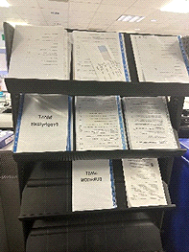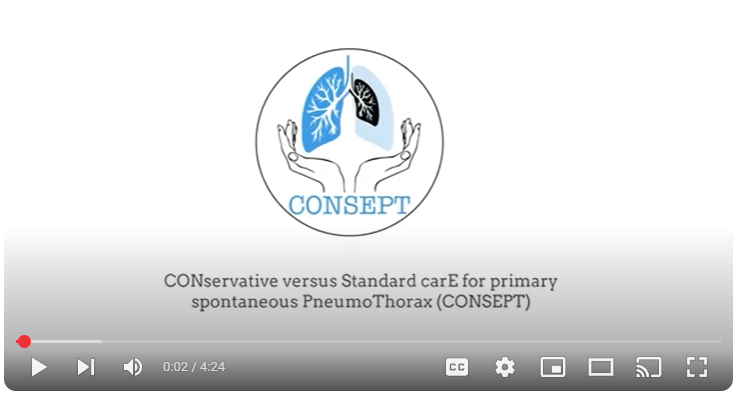
Eligibility
Local study conflicts
- None
Inclusion Criteria:
- Symptomatic primary spontaneous pneumothorax of sufficient size to allow intervention
- Able to give informed consent
- Age between 16 and 50 years old (inclusive)
Exclusion Criteria:
- Evidence of clinical tension pneumothorax
- SpO2 <92% on air
- Bilateral pneumothorax
- Pregnancy
- Inability to consent or comply with trial requirements.
- Known or suspected underlying lung disease:
- Patients with a diagnosis of asthma who are on regular preventer medication or a history of ever having been admitted to hospital for asthma are excluded. Patients who do not use any medication, or only occasional 'reliever' medication would still be eligible.
If the patient is eligible:
Gain verbal agreement in principle before proceeding. Explain:
- Inform the patient they may be eligible for a research study
- Taking part in research is likely to improve the quality of their care
- Risks are carefully controlled - research is safe
- Explain the uncertainty that exists with respect to treatment of their condition;
- If they change their mind they can withdraw their participation at any point
Step by Step Guide to Recruitment:
In standard working hours
- The team aims to be available 8am-4pm Monday to Friday;
- In research team working hours (If research team member is available, they will be signed in on alertive).
- Contact them via Ed research on alertive or extension 1041.
When the ED Research team is not available:
Estimated time to recruit a patient
- 30 minutes
Gather documentation
- Collect patient pack (patient information sheet and discharge booklet) from shelves in trolley bay

Gaining consent
- Share patient information video with potential participant as part of consenting process (saved as a bookmark on research iPad)
- Complete screening and all baseline questions (you can do this directly onto the computer or on paper initially and then copy across)
- Consent the patient (Patient Consent only – the patient must have capacity) and complete consent form.
Or,
Click image to view the video on your device:

Or,
Tap the button below to display a QR code link to the patient information video, for the patient to scan:
Randomisation procedure
- Use Ipad (available in CHED office) or a desktop computer to access concept REDCap: Click here to go to REDCap
- Once all data is entered the treatment allocation will be given
Carrying out the intervention:
- Inform the treating team of the patient of allocation.
- Document on trust paperwork (provided in recruitment pack) consent discussion and treatment allocation.
Disposition and follow-up:
If admitted:
- Routine care
If discharged:
- Provide patient with a photocopy of their consent
- If allocated to conservative care, the patient will need a 48-hour follow-up booking. Contact pleural team via email (they may organise this), alternatively they can be booked into SDEC
- Pass all paperwork to the research team (CHED office)
- Observe for a period of around four hours from hospital presentation, but the absolute observation period will be at the discretion of the treating clinician
- If during the observation period any of the following occurs: a) Patient wants intervention due to significant symptoms; b) Patient develops physiological instability (SpO2 <92% on air, respiratory rate>25 breaths per minute); c) Repeat chest radiograph demonstrates an enlarging pneumothorax with clinical concern from a senior clinician (e.g. ST4 or above) with the reason recorded; Then they should switch to usual care (i.e. chest drain).
- After the observation period the participant should be discharged if they meet all of the following criteria: a) Symptoms controlled sufficiently to mobilise comfortably; b) Acceptable vital signs to a senior physician; c) No requirement for supplementary oxygen.
- Provide standard safety net advice, written and verbally, for patient with a pneumothorax:
- Smokers should be advised to quit and seek assistance from their GP to successfully achieve this (Men who smoke more than 20 cigarettes a day have 100 times the risk of developing a pneumothorax compared to men that don’t smoke.)
- avoid flying for at least a week after a chest radiograph has confirmed complete resolution of their spontaneous pneumothorax, or until they have recovered from a definitive cardiothoracic surgical procedure aimed to prevent pneumothorax recurrence
- underwater diving should be permanently avoided after a pneumothorax, unless the patient has had bilateral open surgical pleurectomy
- They should return for re-assessment should they become breathless
- From RCEM Learning module spontaneous pneumothorax (opens in new window)
